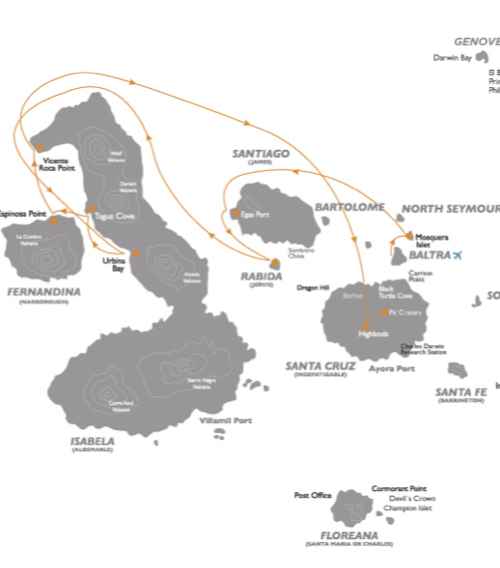Galapagos Legend
The magnificent Galapagos Legend has a 100-guest capacity, but is still small enough for a more intimate experience with friends and family. Cruise in total comfort on a wide selection of itineraries that cover the Archipelago, from 3, 4, 7, 10 and up to 14 nights cruising in complete style. Also kick back in a great variety of comfortable and spacious social areas without losing the vessel’s sense of intimacy. The fantastic open decks allow you to admire the islands’ flora & fauna, enjoy a BBQ at night in total comfort while you stargaze from the Moon Deck or relax with some sun bathing at the pool and bar area. The boat has four decks with 56 cabins fully-equipped with private facilities. Choose between four cabin categories for relaxation along with top of the line services: Standard Plus, Junior Suites, Balcony Suites and the Legend Balcony Suite.The captain and crew are committed to bringing to life enriching experiences according to guest's demands while including added values and special activities. Recently, remodeled the Galapagos Legend is the ideal vessel for extended family fun, rewarding and educational natural history trips as well as plenty of water activities including Scuba Diving.
LEGEND BALCONY SUITE
• 1 cabin located on the Moon Deck.
• Double & Triple options.
• Panoramic windows & private balcony.
• Exclusive & exquisite decoration.
• Complimentary bottle of champagne.
• Top of the line amenities & bathrobe.
• Thermos & iconic postcards as souvenirs.
• Average Area 33 sq m/ 355 sq ft.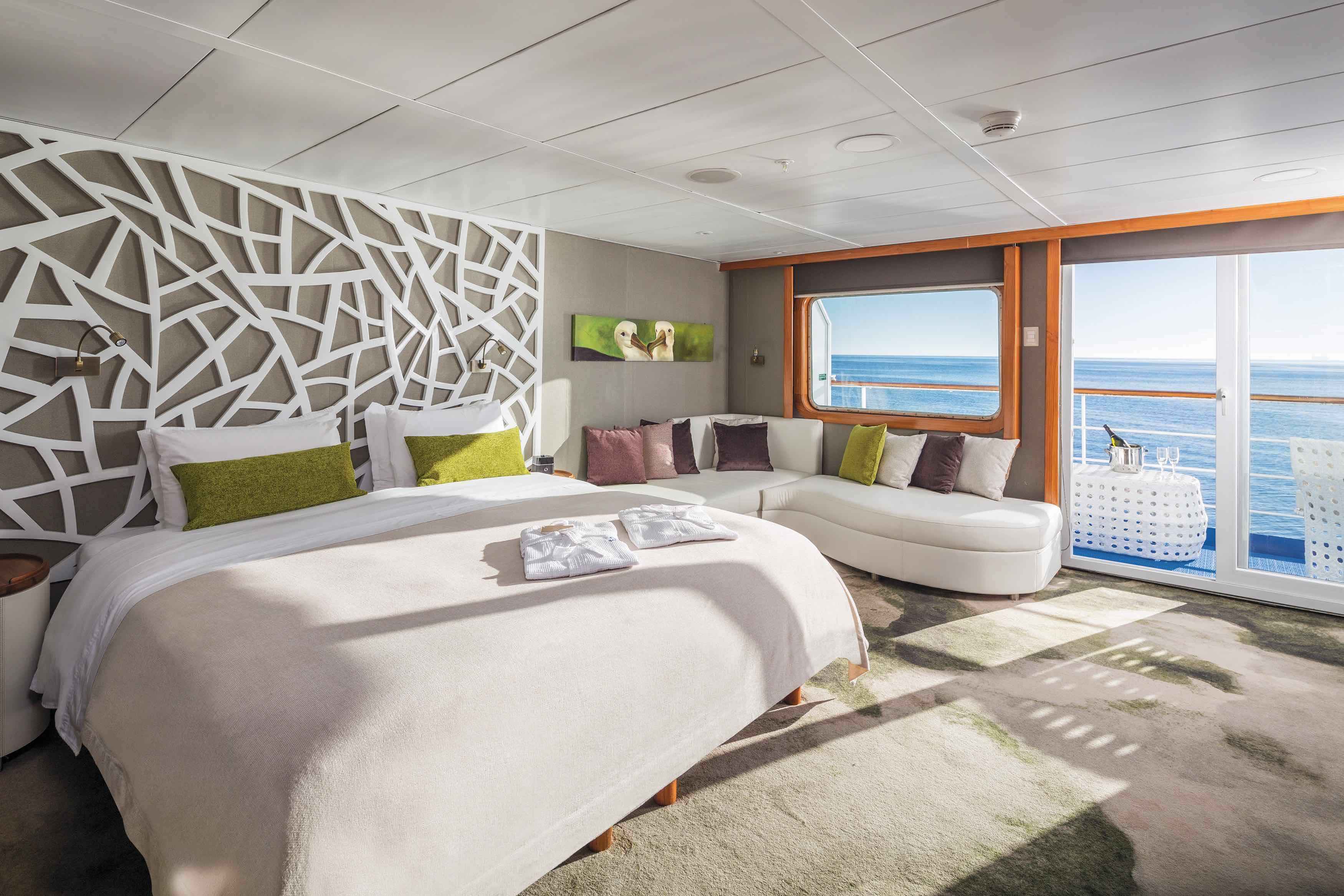
BALCONY SUITE PLUS/ BALCONY SUITE
• 9 Balcony Suites on the Moon Deck.
• 8 Balcony Suites on the Sky Deck.
• Double & Triple options.
• Panoramic windows & private balcony.
• Complimentary bottle of champagne.
• Top of the line amenities & bathrobe.
• Thermos & iconic postcards as souvenirs.
• Average Area 22 sq m/ 237 sq ft.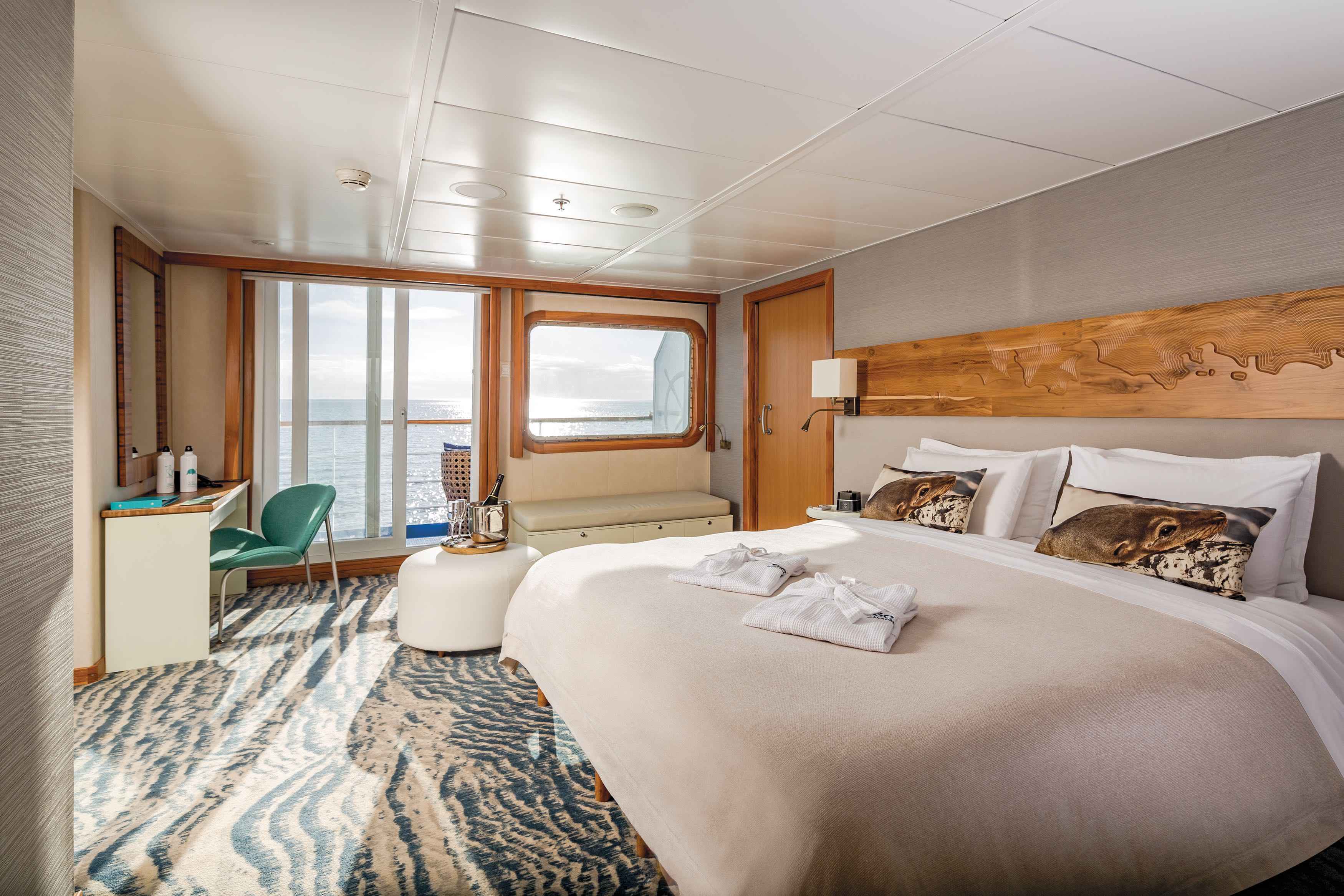
JUNIOR SUITE PLUS/ JUNIOR SUITE
• 24 Junior & 4 Junior Plus Suites on the Earth Deck.
• Double, Triple & Quadruple options.
• 2 Panoramic windows per cabin.
• Interconnected options available.
• Thermos & iconic postcards as souvenirs.
• Average Area 15 sq m/ 161 sq ftin Junior Suites.
• Average Area 20 sq m/ 215 sq ft in Junior Suites Plus.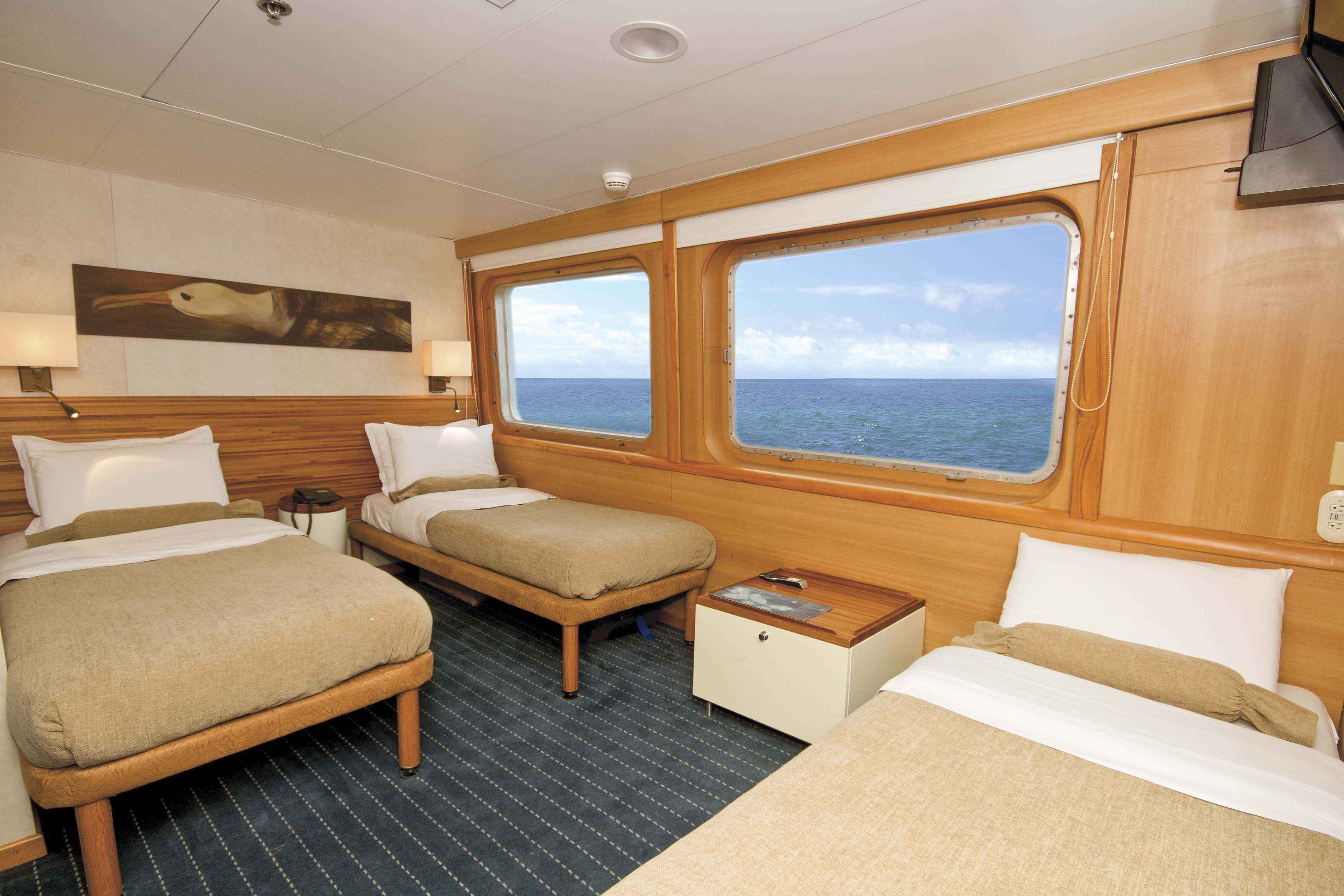
STANDARD PLUS
• 7 cabins on the Sea & Earth Deck.
• Double options available.
• 2 portholes per cabin.
• Thermos & iconic postcards as souvenirs.
• Average Area 11 sq m/ 119 sq ft.
STANDARD (INTERIOR)
• 3 cabins on the Earth Deck
• Single & Double options
• Interior accommodations.
• Thermos & iconic postcards as souvenirs.
• Average Area 13 sq m/ 140 sq ft.
Hop aboard the Galapagos Legend for an exciting three-, four-, seven-, or 14-night cruise around the glorious Galapagos. Different itineraries are available, exploring various islands of the archipelago. Wildlife-spotting and close-up photography opportunities are plentiful with a rich array of water-dwelling creatures and land animals on display. Guided hiking and walks tours are included daily, panga excursions and licensed divers can join scuba outings. Trips start and end at either Baltra or San Cristobal, providing airport access. Whether you sail North, South, East, or West, your trip will include varied activities, such as swimming, snorkeling, and kayaking, and stops at diverse islands. Plus, there’s also glass bottom boat trips if you don’t feel like getting wet.
Back on board, there’s a children’s play area, library, fitness room, yoga classes, shopping, spa and pool + jacuzzi. There are daily briefings as well as education/fun talks about the Galapagos Islands to enjoy.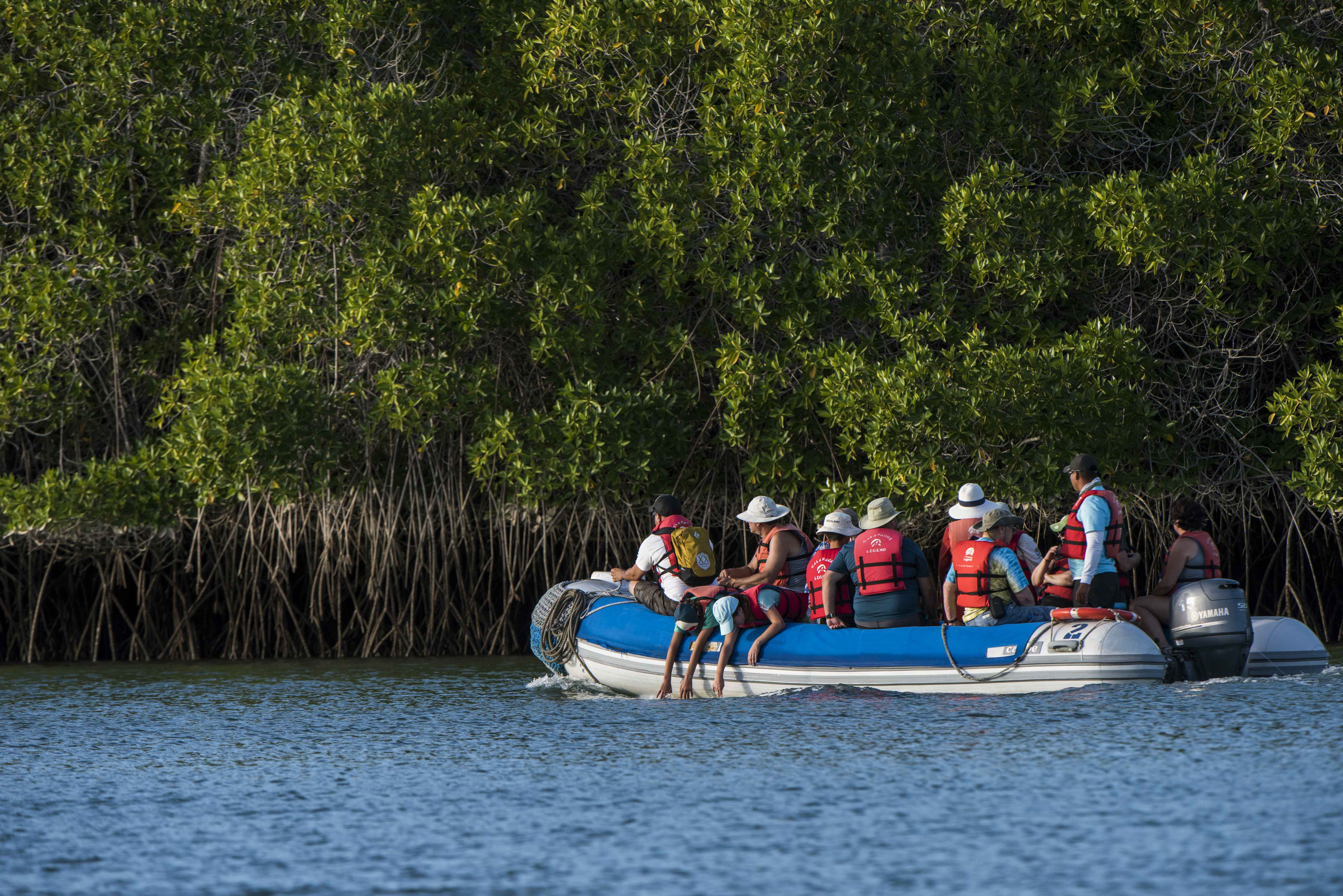
Routes
Sample Itinerary - 5 days / 4 nights
Day 1 - Thu
AM – Baltra Airport: Departure from Quito or Guayaquil to Baltra Island (2 ½-hour flight). Arriving in the Galapagos, passengers are picked up at the airport by our natural guides and taken to a ten-minute bus drive to the pier to board the M/V Galapagos Legend.
PM – Mosquera Islet: Wet Landing, Mosquera Islet is located between North Seymour and Baltra Island. This flat, sandy island has a large colony of sea lions. It is also an excellent site to observe shorebirds such as herons and lava gulls. There is no trail on the islet, the visitor can enjoy the open area. Most of the islet is covered with sand and barren lava rock. Very little sesuvium portulacastrum plants grow on the sand.
Day 2 - Fri
AM – Egas Port (Santiago Island): Wet landing. Egas Port is a black volcanic sand beach, visited by Darwin in 1835. The first section of the trail is formed of volcanic ash (eroded tuff) and the other half is an uneven terrain of volcanic basaltic rock. The unique, truly striking layered terrain of Santiago shore is home to a variety of animals including the bizarre yellow-crowned night heron and marine wildlife including lobster, starfish and marine iguanas grazing on algae beds alongside Sally light-foot crabs. It is easy to see colonies of endemic fur seals swimming in cool water volcanic rock pools.
PM – Rabida Island: Wet landing. Dark-red sand covers the unique beaches of this island, home of sea lions colonies; Rabida is considered the epicenter of the Galapagos Islands due to the diversity of its volcanic geology. Nesting brown pelicans are found from July through September plus nine species of the famous Darwin’s finches. Here a dinghy ride along marine cliffs is done, to observe nesting seabirds. Snorkel off the coast, where marine life is particularly active.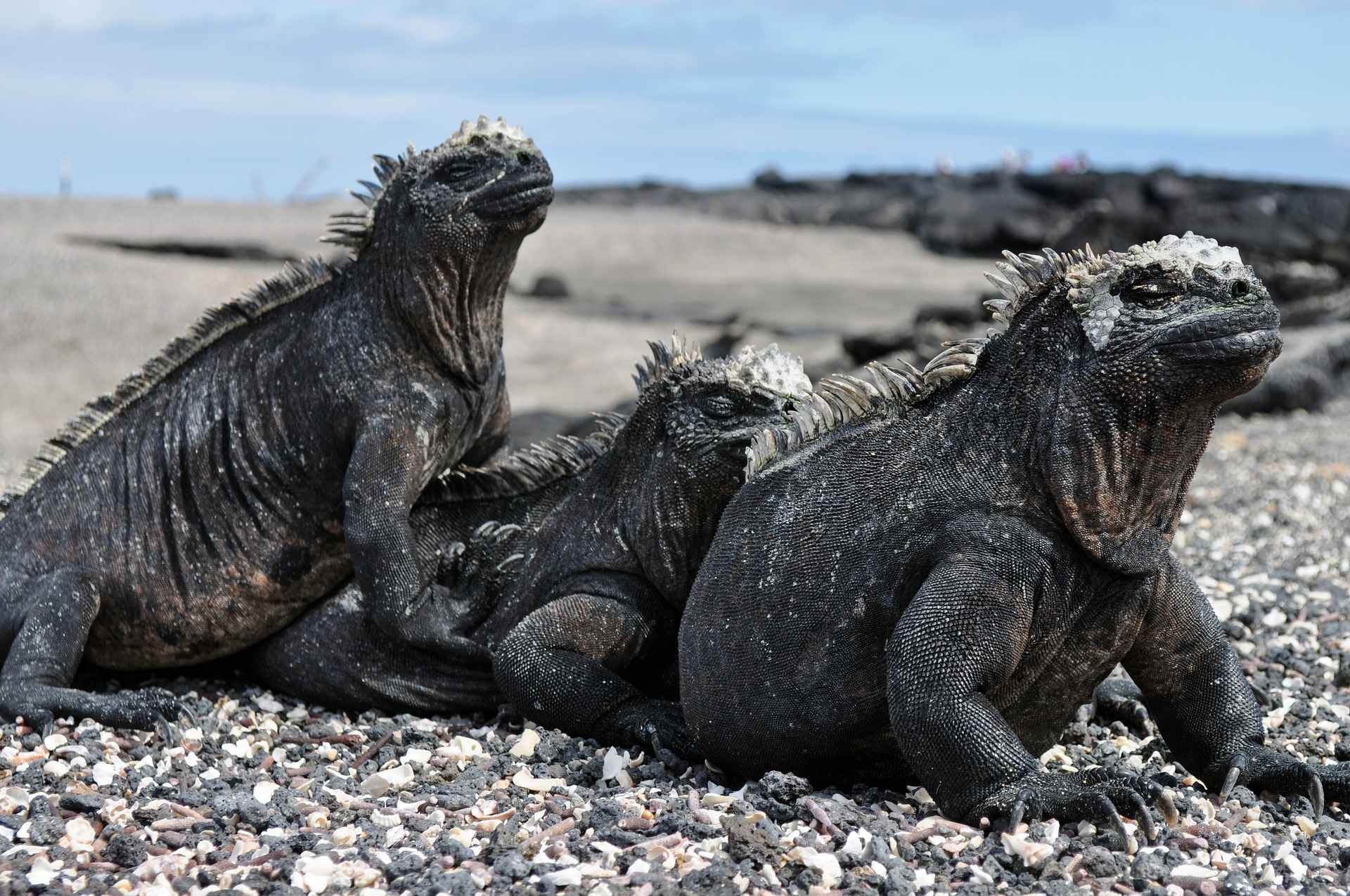
Day 3 - Sat
AM – Urbina Bay (Isabela Island): Wet landing (might be difficult due to the tide). Volcanic black beach, depending on the season, it is possible to find giant tortoises, land iguanas, and the unusual flightless cormorant. After a short walk inland it´s snorkeling time, a chance to swim with sea turtles, sea lions, and countless tropical fish. Urbina Bay features a wide variety of plants with a different range of colors in flowers, attracting different insects, birds, and reptiles. One of the highlights of the island is the uplifted coral reef that resulted from the 1954 seismic activity; here the views of Alcedo Volcano are remarkable. When navigating from Urbina to Tagus Cove whale watching is usual in May – December.
PM – Tagus Cove (Isabela Island): Dry landing on Galapagos’ largest island where we will learn about the eruption of the five volcanoes that form it. The trail leads to Darwin’s salt-water crater lake and excellent views of lava fields and volcanic formations. We will return by the same path for a dinghy ride along a shoreline full of marine wildlife, where we will admire a variety of seabirds, such as blue-footed booby, brown noddy, terns, flightless cormorant and depending on the season, a large number of Galapagos Penguins which are only 35 cm tall; the only penguin species in the world to live in the tropics. The population of penguins on the islands is about 2,000 individuals, most of which live on this western portion of Isabela; others are scattered further south. We will have an opportunity to snorkel in deep water. Graffiti believed to have been left by 19th-century pirates is a curious reminder of an intriguing past.
Day 4 - Sun
AM – Espinosa Point (Fernandina Island): Dry landing. From Espinosa Point, is possible to admire a wide view of Isabela Island across the Bolivar Channel, an area that boasts some of the highest diversity of endemic sea fauna in the Galapagos. Here the largest, most primitive-looking marine iguanas are found mingling with sea lions and Sally Lightfoot crabs. Fernandina displays a wonderful opportunity to encounter flightless cormorants at their nesting sites, Galapagos penguins and the “King” of predators on the islands, the Galapagos hawk. Pa-hoe-hoe and AA lava formations cover the majority of Fernandina terrain. Vegetation is scarce inland, with few brachycereus cacti. In the shore, mangrove can be found.
PM – Vicente Roca Point (Isabela Island): Great deep-water snorkeling at one of the richest marine havens on Earth, the Bolivar Channel. Accessible by water, we take a dinghy ride along the coast to observe a great diversity of sea and coastal birds; Nazca and blue-footed boobies, noddies, brown pelicans, penguins, flightless cormorants. The upwelling of cold water currents in this part of the Galapagos gives rise to an abundance of marine life, a perfect place for deep snorkeling.
Day 5 - Mon
AM – Highlands Tortoise Reserve (Santa Cruz Island): Dry landing. In the mountains of Galapagos is possible to admire different kinds of birds, such as tree and ground finches, vermillion flycatchers, paint-billed crakes, yellow warblers, and cattle egrets (usually standing on the tortoises’ shell). The journey to the reserve offers great opportunities to see the contrasts that the island offers in reference to the variety of ecosystems. The road goes from the coast through the agricultural zone and straight up to the dense humid forests. Often, Galapagos Giant Tortoises are also seen on the way, wandering through pastures in the paddocks. This spot is a birdwatchers’ haven since almost every land bird present on the island lives or migrates here.
PM – Baltra Island Airport: After the visit, passengers will be transferred to the airport for their return flight to Guayaquil or Quito.
Please Note: Itineraries are just an example and subject to change depending on weather and other factors. 3, 4, 5, 7, 10 and 14 night trips are available year-round. The base of the marine ecosystems, plankton, provides for the rest of the species and allows animals that are usually found in rich cold waters such as the penguins, orcas, albatross, among others, to establish and develop in the islands.